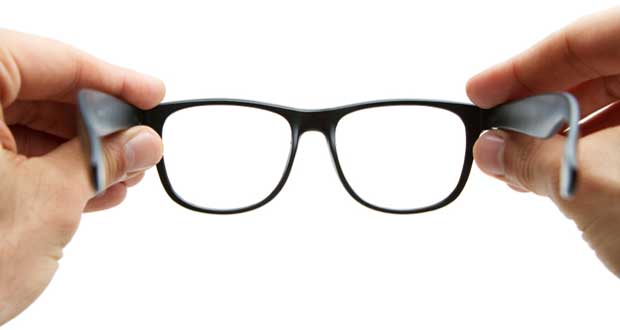Results Show That 56 Million “Off The Grid” Consumers Are Slipping Past Advertisers Because They Are Removing Themselves From Live Broadcasting Ad Experiences
NEW YORK – SAY Media, a modern media company, announced the results of a research project aimed at better understanding consumer media consumption and advertising effectiveness. In addition to uncovering key behavioral changes, the study strove to better understand the implications for marketers trying to reach this desirable, growing audience.
Consumers who’ve shifted the majority of their video viewing to non-live video content make up a significant portion of the adult, online population in the United States. This desirable consumer group is spending more time online and while they continue to spend their entertainment hours with professional quality video, they expect to watch on their own schedule and to have the option of skipping commercials when they choose.
– Online consumers are increasingly more difficult to reach through live television.
– This Off the Grid group represents nearly one third of the adult, online population in the United States – according to comScore, nearly 56 million people and growing.
– They are driven by the desire to make their media consumption more efficient through choice and control – it is no longer the question of “what’s on” but “what’s available.”
– With the increasing ease of skipping commercials, they are constantly making a mental calculation as to whether it is easier to avoid interruptive ads or tolerate them.
– They are educated, digitally focused, connected, engaged and influential.
– Within the Off the Grid segment, consumers can be further categorized into two sub-groups:
– On Demander: 20 percent of online consumers fall into this segment. All of them watch less live TV than they did one year ago. On Demanders access video through a variety of devices that allows them to time and location shift to meet their busy schedule.
– They own an average of 5.4 devices for watching video, including their TV and PC.
– Almost half of them subscribe to Netflix.
– 40 percent own video-enabled mobile devices like smartphones or iPads.
– Time and device shifting allows this group to consume 30 hours of video each week – compared to the Internet average of 25 hours per week.
– This group is the most turned off by intrusive, repetitive advertising.
– Opt Out: 13 percent of online consumers have completely opted out of live television and get their content by streaming across devices, through their DVR or on DVD.
90 percent of this group actually does own a TV.
– This group skews even younger, with 30 percent falling into the 18-24 demographic.
– 41 percent live in urban areas.
– They consume 21 hours of video content in a typical week – half of which is online.
It is too early to declare the death of the interruptive ad model, but the long expected demise is starting to accelerate. The existence and growth of this desirable cohort of consumers has serious implications for advertisers and for the way that publishers try to reach them. For these audiences, the desire to consume media efficiently has elevated choice and control as the two deciding factors on how they obtain their online content. But as choice and control improve, so does the Off the Gridder’s ability to avoid advertising.
“Getting people to engage in an on-demand world with so much fragmentation is the biggest challenge marketers face today,” said Matt Rosenberg, vice president of Solutions, SAY Media. “We’ve been delivering engagement for years and this study reconfirms that the best way to reach this audience of approximately 56 million is with respectful, content-driven advertising that lets the user be in control.”
Marketers are still highly devoted to the ideas of frequency and interruption, but as consumer behavior changes, so must advertiser behavior. The increased ability of consumers to easily avoid advertising messages means that the modern marketer must develop ads that are more content-rich and compelling in order for them to remain effective. Advertisers need to respectfully connect with these consumers in their own language and build scale from targeted communities rather than down from broad demographics, thus optimizing for attentive reach.
“Optimizing for effective frequency is expensive for advertisers and repetitive for consumers,” said Brian Monahan, executive vice president of Mediabrands’ IPG Media Lab. “We need new ways to speak to these consumers that provide them with a more meaningful, valuable brand experience.”
METHODOLOGY
The two-part study, conducted in conjunction with TRU and comScore, included both qualitative and quantitative results. TRU conducted eight in-home interviews with Off the Grid households in San Francisco and Chicago to better understand their technology usage, video watching trends and feelings about online advertising.
Additionally, comScore featured a carefully controlled, online survey with 1159 consumers. Those who took the survey were asked a variety of questions to help better identify themselves based on how they consume their media content.
The Opt Out group was defined as not owning a television or not watching live television in the past week and streaming more than 4 hours per week. The On Demander group was defined as streaming content more than 4 hours each week and spending more time streaming video than watching live television. All On Demanders watch less live TV than they did one year ago.
CONSUMER QUOTES:
“I can’t imagine a time when I don’t have access to media because I am online all the time. As long as you have the Internet, you can cherry pick what you want to see, when you want to see it.” – Clarissa
“My time is more precious now that we have a one year old daughter and using Roku or Netflix provides us with easier access to our entertainment. In fact, we got rid of almost all of our premium channels.” – Kate
To view our white paper or to watch a video highlighting this study, please visit: www.saymedia.com/research.php
ABOUT SAY MEDIA
SAY Media is a modern media company, the evolution of VideoEgg as it continues its mission to make online advertising better. SAY Media helps advertisers engage today’s social consumer through rich content experiences while helping creators monetize their work and grow their audiences. The company connects paid and earned media to deliver brand messages to an online audience of 345 million across display and mobile. For more information on SAY Media: www.saymedia.com
ABOUT IPG MEDIA LAB
Launched in 2006, the Lab helps IPG Clients identify media technologies that can drive business results. In addition to digital ad effectiveness testing, the Lab does Consumer research to determine how emerging media influences decision-making. The Lab has a 4,000 square foot facility in Los Angeles that showcases all types of media technology. www.ipglab.com
ABOUT COMSCORE
comScore, Inc. (NASDAQ: SCOR) is a global leader in measuring the digital world and preferred source of digital marketing intelligence. For more information, please visit www.comscore.com/companyinfo.
ABOUT TRU
TRU is the global leader in youth research, having surveyed more than two million tweens, teens, and twenty-somethings worldwide. TRU is part of TNS, the world’s largest custom-research firm, as well as a subsidiary of Kantar (the insights and consultancy arm of WPP). More information at http://www.tru-insight.com









